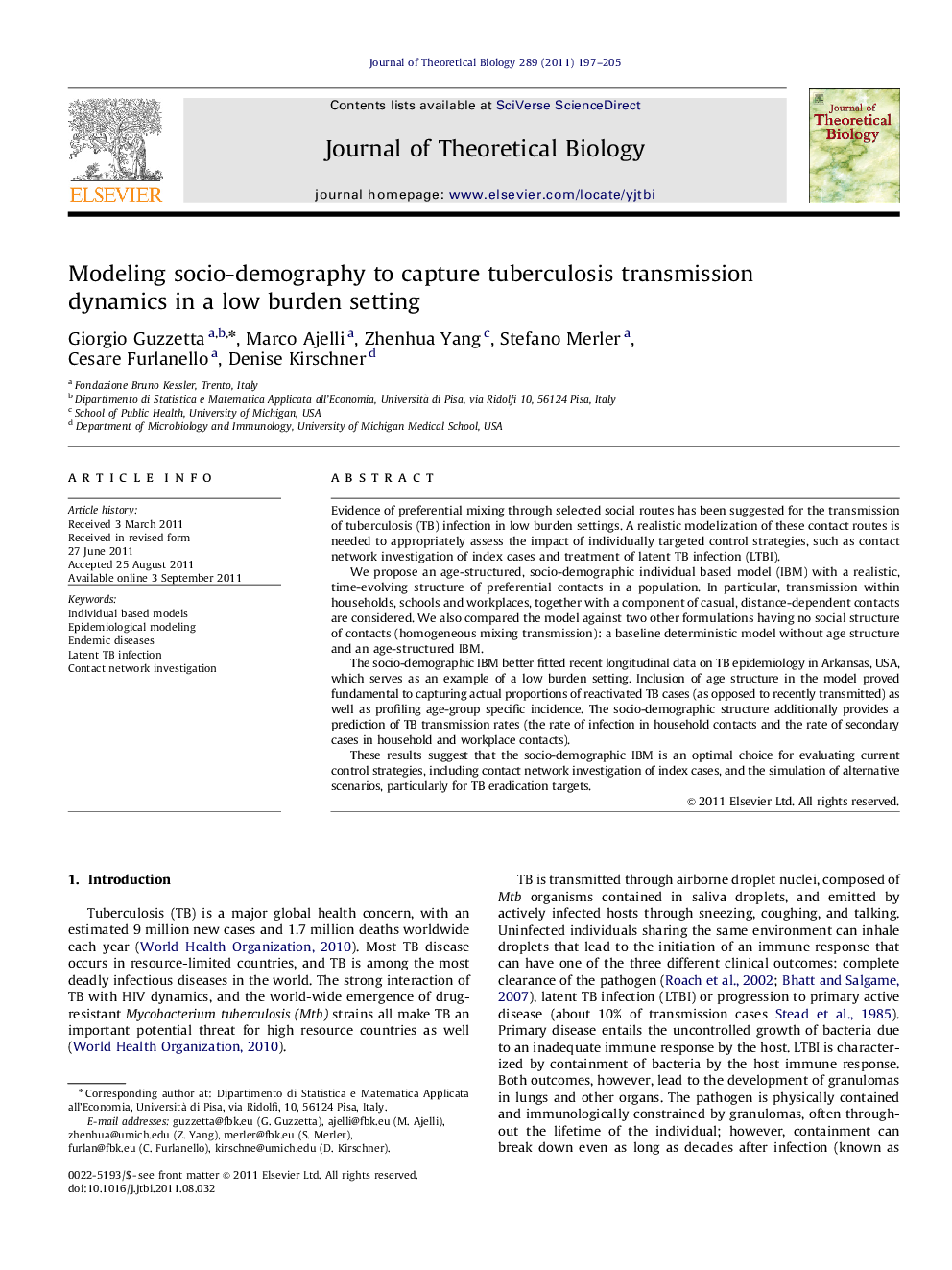| Article ID | Journal | Published Year | Pages | File Type |
|---|---|---|---|---|
| 4496910 | Journal of Theoretical Biology | 2011 | 9 Pages |
Evidence of preferential mixing through selected social routes has been suggested for the transmission of tuberculosis (TB) infection in low burden settings. A realistic modelization of these contact routes is needed to appropriately assess the impact of individually targeted control strategies, such as contact network investigation of index cases and treatment of latent TB infection (LTBI).We propose an age-structured, socio-demographic individual based model (IBM) with a realistic, time-evolving structure of preferential contacts in a population. In particular, transmission within households, schools and workplaces, together with a component of casual, distance-dependent contacts are considered. We also compared the model against two other formulations having no social structure of contacts (homogeneous mixing transmission): a baseline deterministic model without age structure and an age-structured IBM.The socio-demographic IBM better fitted recent longitudinal data on TB epidemiology in Arkansas, USA, which serves as an example of a low burden setting. Inclusion of age structure in the model proved fundamental to capturing actual proportions of reactivated TB cases (as opposed to recently transmitted) as well as profiling age-group specific incidence. The socio-demographic structure additionally provides a prediction of TB transmission rates (the rate of infection in household contacts and the rate of secondary cases in household and workplace contacts).These results suggest that the socio-demographic IBM is an optimal choice for evaluating current control strategies, including contact network investigation of index cases, and the simulation of alternative scenarios, particularly for TB eradication targets.
► Considering age structure in TB models is key to reproducing realistic proportions of reactivation vs. recently transmitted TB. ► The use of Individual Based Models allows the tracking of transmission in specific settings. ► Modeling socio-demography contributes to a deeper understanding of TB transmission dynamics.
